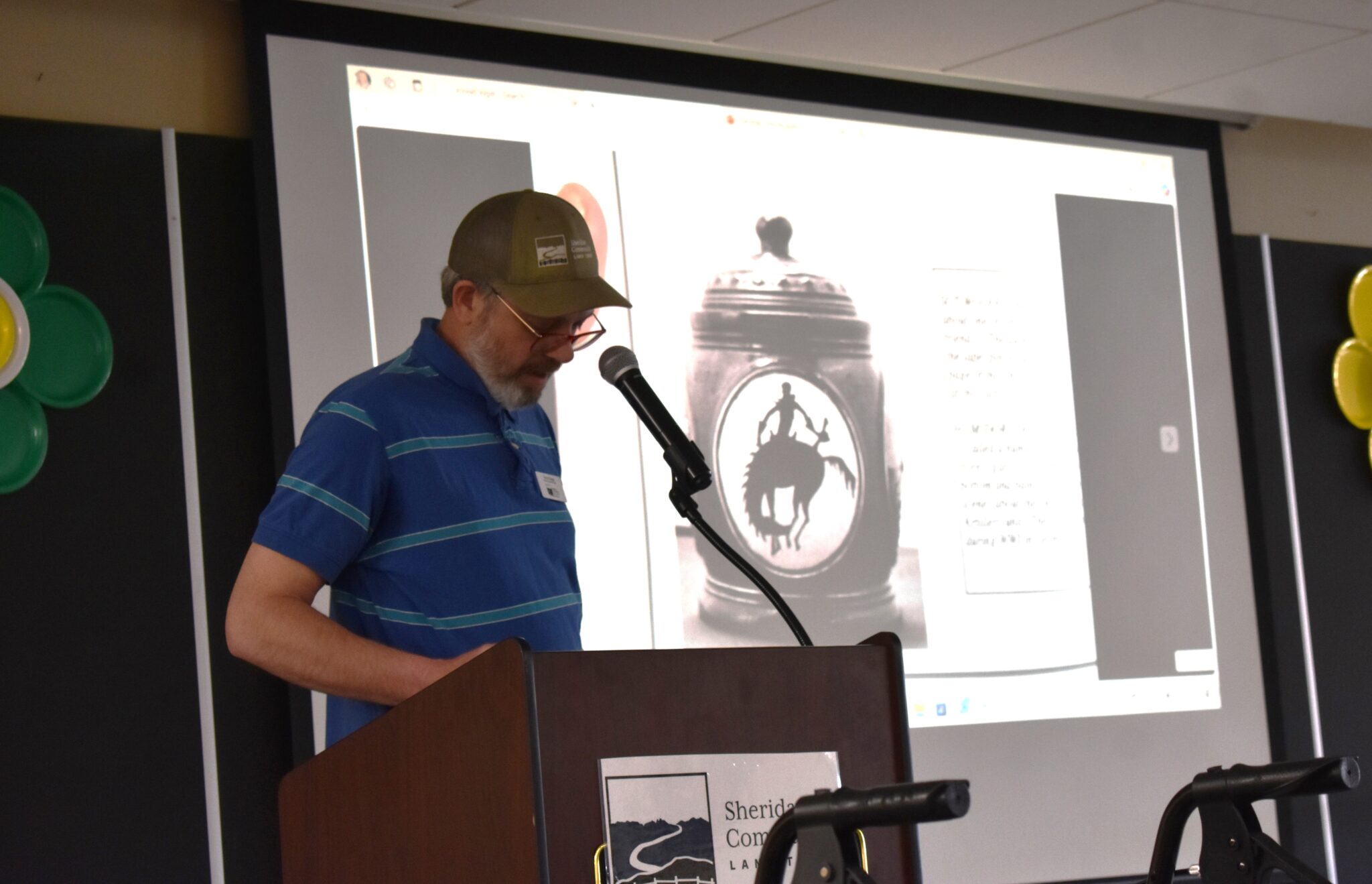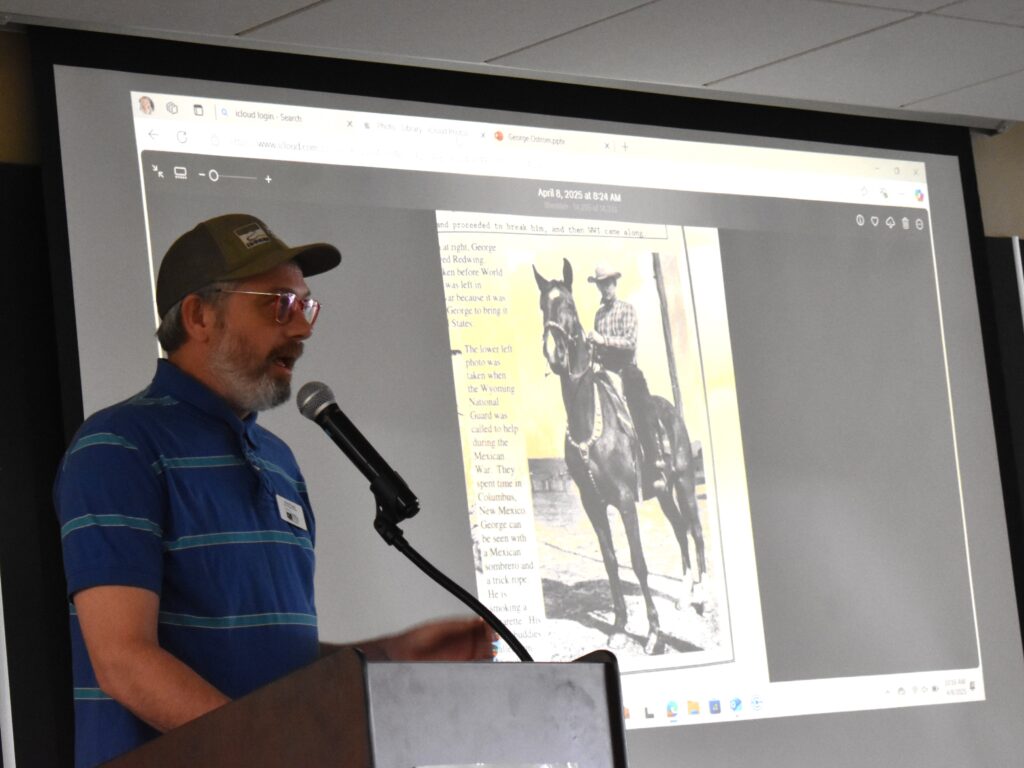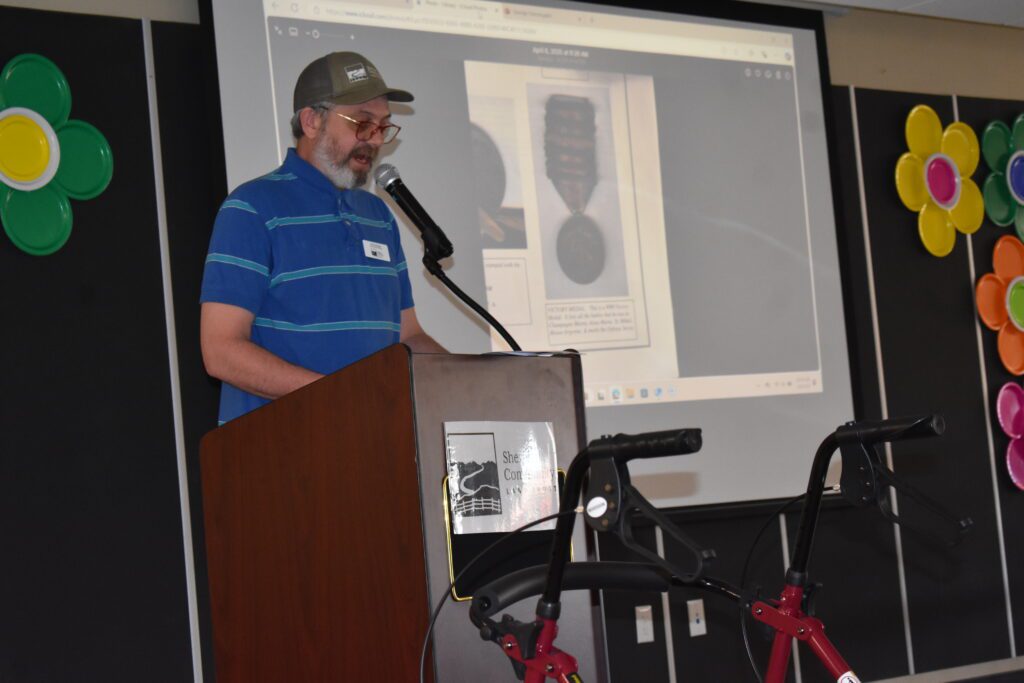News
SCLT Program was “A Tribute George Ostrom”

On April 8, The Sheridan Community Land Trust Explore History program was “A Tribute to the Life of the Legendary George Ostrom.”
George Nicholas Ostrom (1888-1982), was a multifaceted individual who made significant contributions in various fields. He served as a soldier, artist, bugler, wolf hunter, and conservationist. Ostrom is credited with creating the iconic bucking horse and rider symbol that has come to represent Wyoming.
Kevin Knapp, SCLT History Program Manager, said that through osmosis he was aware of how interesting Ostrom’s life was, and the connection with the bucking horse on the license plate. Knapp said he remembers going to school in Big Horn and often saw the large mural that Ostrom painted on the school wall.
Ostrom was born April 1, 1888 in Iowa. He grew up poor, and said he lived on ‘Cornbread and side pork.’ As a child he once saw the Buffalo Bill Show from a hill, and was impressed by the soldiers in uniform and the mock battles they staged. Later, he met Buffalo Bill in person.
The family moved to Sheridan in 1913, and homesteaded on Spring Willow Creek. One slide Knapp presented was a sketch of one of their homesteads, possibly the Spring Willow land.

Ostrom is best known for the iconic bucking horse on the Wyoming license plates, and the UW logo. Knapp talked about how the logo came about, starting with a horse race.
George trained the colt and named it Redwing.

George joined the Wyoming National Guard in 1913, and received a sharp-shooter metal for his shooting ability. He also took photos and used them for reference to do his artwork. It wasn’t long before his Guard unit was sent overseas to fight in WWI.
They were in several engagements and saw a lot of action. Horses were still very much a part of the Army in WWI, with many being shipped overseas during the war, many from Wyoming, including Redwing.
There is no owning a horse as a soldier, and all the officers wanted to ride Redwing. One day one of the pet bears that the unit adopted got loose, scared Redwing and he jumped up in the air and Ostrom sketched the iconic picture.
Redwing never saw war action, but due to his popularity as a riding horse, he was shipped to an equestrian training facility where recruits were trained to ride horses, so he spent the war in a safe place. Unfortunately, it was too expensive to ship the horse home, so he was sold to the French government to remain in the training school.
Knapp talked about how the bucking horse logo came to be
In 1936, the bucking horse was added to the Wyoming license plates, and became a registered trademark for the State of Wyoming.
Ostrom also helped to establish the Custer Highway route, which later became highway 14 from the Black Hills to Yellowstone, the “Black and Yellow Highway,” as well as Interstate 90 from Gillette to Sheridan in the 1960s.

During Knapp’s talk he referenced a book published by the Sheridan County Historical Society, and now on sale, along with prints of George’s artwork, at Wolfpaw Prints and Cards, owned by Bill Ostrom, George’s grandson.
This program will be repeated on April 15 at the TRVCC in Dayton at 10:30 a.m., and SCLT Explore History is free to attend and open to all.

